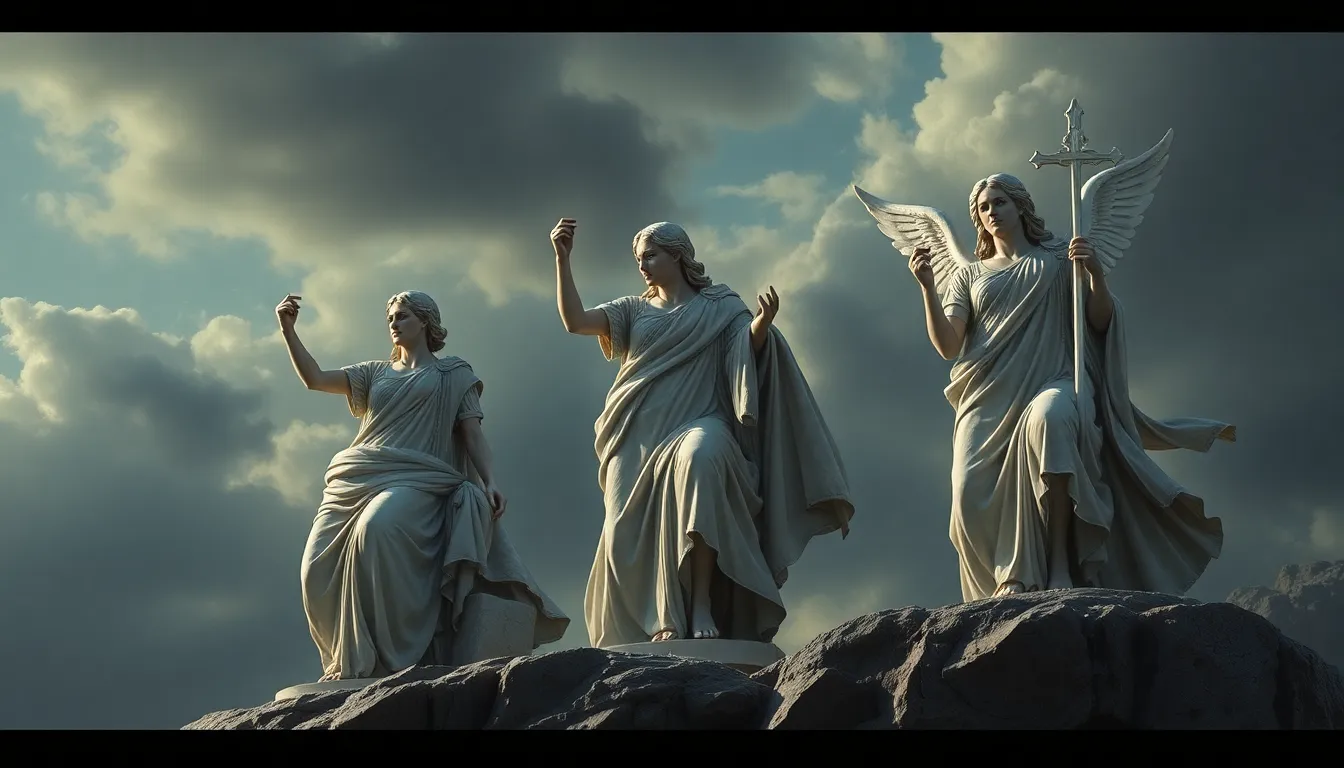The Fates in Popular Movies: A Look at Their Modern Interpretations
I. Introduction
The Fates, known in Greek mythology as the Moirai, are personifications of destiny. They are often depicted as three women who control the threads of life, determining the fate of every individual. Their influence extends deep into the narrative structures of stories, serving as a powerful symbol of fate versus free will.
This article explores the significance of the Fates in storytelling, particularly in modern film. By examining their representation in popular movies, we can gain insight into how these timeless figures have been reinterpreted for contemporary audiences.
II. The Origin of the Fates in Mythology
The concept of the Fates has its roots in ancient Greek mythology, where they were revered and feared as omnipotent figures. They were often depicted as three sisters:
- Clotho: The Spinner, who spins the thread of life.
- Lachesis: The Alloter, who measures the length of the thread.
- Atropos: The Unturnable, who cuts the thread, signifying death.
Together, these three sisters embody the inexorable nature of fate, shaping human destiny from birth to death. Their roles underscore the belief that fate is predetermined and cannot be altered by human intervention.
III. The Fates in Classical Cinema
In the early days of cinema, the Fates were depicted in various adaptations of classical myths, such as “The Furies” and “Oedipus Rex.” These films often interpreted the Fates through a traditional lens, emphasizing their roles as harbingers of doom and destiny.
For instance, “Oedipus Rex” portrays the Fates as unavoidable forces that lead the protagonist to his tragic end, adhering closely to the original mythological narratives. In contrast, other interpretations, like “The Furies,” approach the Fates with a more nuanced understanding, highlighting the interplay between fate and individual choice.
IV. Modern Adaptations of the Fates
In contemporary cinema, the Fates have been reimagined and integrated into diverse narratives. Films such as “The Matrix,” “Cloud Atlas,” and “The Brothers Grimm” explore themes of fate and free will in innovative ways.
For example:
- “The Matrix”: The concept of a predetermined reality versus the choice to break free from it echoes the Fates’ influence on human lives.
- “Cloud Atlas”: This film intricately weaves together multiple timelines, illustrating how actions in one life can affect countless others, akin to the Fates’ threads.
- “The Brothers Grimm”: The portrayal of fate is less direct but still resonates with the idea of characters being influenced by greater forces.
These films reflect an evolution in the understanding of the Fates, presenting them not just as determiners of destiny but as complex influences on the characters’ journeys.
V. Themes and Symbolism of the Fates in Film
The Fates introduce rich themes into film narratives, most notably the tension between free will and determinism. This theme challenges characters to confront their choices and the consequences that arise from them.
Moreover, the symbolism of the Fates is often evident in character development and plot progression:
- Character Development: Characters may struggle against their perceived destinies, leading to dramatic arcs.
- Plot Progression: The Fates can act as catalysts for major plot twists, emphasizing the unpredictability of life.
- Challenging Societal Norms: Filmmakers often employ the Fates to question societal expectations and highlight the importance of personal agency.
This use of the Fates allows audiences to reflect on their own lives and the nature of destiny.
VI. The Fates in Animation and Family Films
Animated films have also engaged with the concept of the Fates, often reinterpreting them for younger audiences. A prime example is Disney’s “Hercules,” where the Fates are depicted as comical yet ominous figures who wield power over destiny.
This interpretation serves to introduce children to complex themes about fate and choice in an accessible manner. The portrayal of the Fates in animation often emphasizes the balance between humor and the serious implications of their roles.
The impact of these portrayals on cultural perceptions of fate and destiny is significant, as they shape how younger audiences understand and relate to these concepts.
VII. Audience Reception and Cultural Impact
Audiences have shown a diverse range of responses to the depiction of the Fates in film. Many viewers appreciate the nuanced portrayals that challenge traditional notions of destiny, while others may prefer more straightforward interpretations.
The influence of modern interpretations extends beyond the screen, permeating popular culture and inspiring discussions about fate:
- Social Media: Platforms like Twitter and Instagram allow fans to share their thoughts and interpretations of the Fates in various films.
- Fan Communities: Online forums and fan fiction often explore themes related to the Fates, expanding their narrative possibilities.
This engagement not only reflects the enduring fascination with the Fates but also illustrates how contemporary society grapples with the concepts of fate and free will.
VIII. Conclusion
In summary, the Fates have evolved significantly in their portrayal across cinema, from classical depictions to modern interpretations. Their enduring legacy in storytelling highlights the universal themes of destiny, choice, and the human experience.
As filmmakers continue to explore these complex themes, we can anticipate further innovative representations of the Fates in future cinema, ensuring that their influence on storytelling remains as potent as ever.




